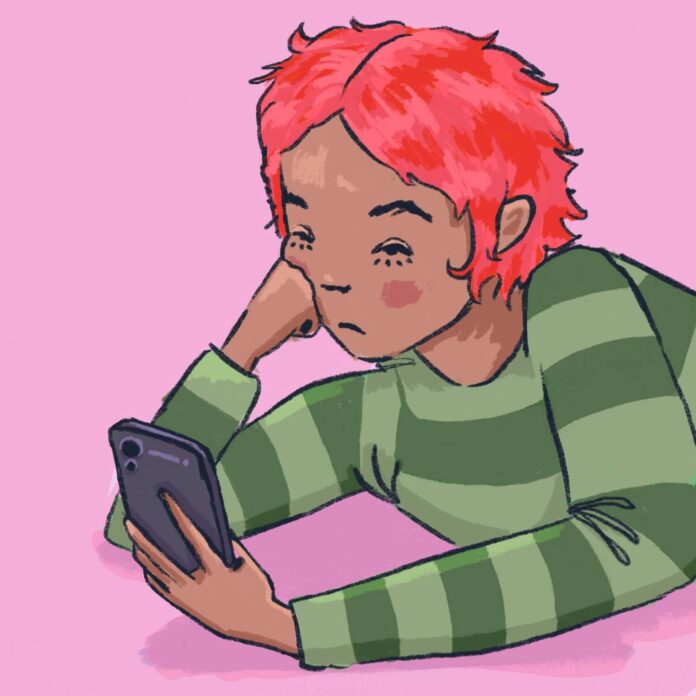What do you do when you have nothing to do? Like many people, I often have the urge to use my phone to fill moments of time that feel empty, like standing in line at the dining hall or waiting for a class to start. My logic is that since these moments lack obvious excitement, it makes sense to spend my time on something more fun. Instead of choosing to stand in line dying of boredom while I wait for my lunch, I could choose to be laughing at a video or attempting to learn French on Duolingo. On a small scale, using the internet to cure boredom does not appear to be cause for concern. But when you zoom out, the problem comes into view.
Using a smartphone is shown to have a similar impact on the brain as using addictive drugs. A large amount of dopamine is dumped into my brain as I turn on my phone to watch a video of a dog wearing a hat, for example. When I turn off my phone, I am sent into a state of withdrawal. My brain wants to recreate the same feeling of pleasure it received when I watched the first video, and it therefore tells me to find another video of a dog in a hat. This part of the brain is more active in teenagers and children, which means they are far more likely to suffer from internet addiction. In order to ensure the brains of children and teenagers are able to develop properly, age-based restrictions have been suggested by health officials for social media platforms and other addictive apps.
I think it is increasingly important to make sure children and teenagers are protected from the negative impacts of social media use and internet addiction. As someone whose childhood preceded the smartphone renaissance, I see value in waiting until children are older before allowing them to access social media. Since children and teenagers are unable to effectively self-regulate the amount of time they spend online, I believe age-based restrictions can be helpful tools in encouraging adolescents to turn on their imaginations instead of their phones.
Though I’m not a parent of an iPad kid, I do think a lot about my own screen time and how I spend my time in general. It is terrifyingly easy to spend upwards of two hours scrolling through your app of choice (my daily average of screen time this week was three hours and 12 minutes, and I don’t remember anything I scrolled through). Recently, I have been attempting to be mindful of how the way I spend my time makes me feel and whether the activity at hand is providing me with what I need.
Part of the issue with social media usage is that we don’t always think about a) why we want to go on the platforms, and b) if doing so is actually bringing us joy. For instance, sometimes when I think all I want to do is sit down and watch 700 TikToks, what I actually need to do is take a nap. And when I inevitably watch the 700 TikToks instead, I end up feeling upset about the time I have spent doing something I didn’t actually want to do. Getting that three hours and 12 minutes down to one hour is a goal I am constantly trying and failing to meet, but the important part is the trying.
Breaking the habit of filling time with my phone has not been easy. Internet addiction, no matter how extreme, impacts the brain just like any other craving. By focusing on the joy other experiences bring me, I have been able to shift my perspective from one of loss missing out on videos of dogs in hats to one of gain learning to knit a hat for my dog. Annie Dillard wrote that the way you spend your days is the way you spend your life. As existential as that sounds, I have taken this quote as a reality check. I personally don’t want to spend my life watching videos of dogs wearing hats, no matter how delightful I find them.
Let’s revisit those empty moments. Standing in line at the dining hall, without the crutch of my phone to save me from boredom or social awkwardness, I am able to think about what I am going to eat (and practice saying my order in my head over and over). I can get excited about sharing a meal with my friends, and wonder what stories they have to tell me. I can think about the classes I’ve had that day, and all the things I learned or didn’t quite understand. I can think about dogs wearing hats — and, oh, I’m first in line already! Those empty moments aren’t really empty. They’re full of experiences that I would be missing out on if I had picked up my phone. That’s FOMO, IRL.
Contact Eliza Kirk at ekirk@oxy.edu.
![]()



































